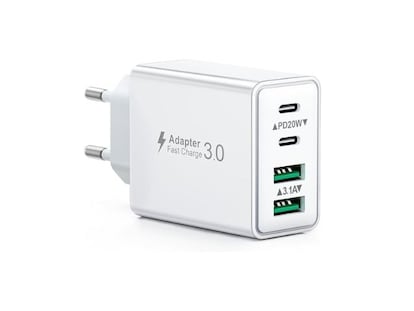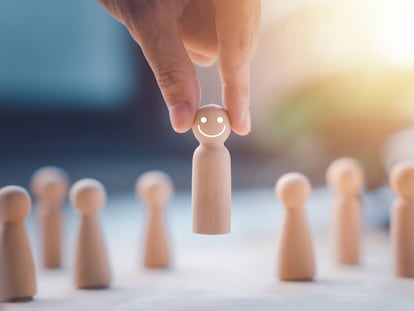Searching for the Soul
This could happen to you any day: you carelessly cross a street, get hit by a suddenly approaching car and suffer a serious brain injury. Weeks later, you find yourself in a nursing home, unable to speak or move any part of your body, only faintly perceiving the world around you through a kind of cocoon, occasionally becoming aware of yourself and your tragic existence. Would you want to be kept alive by medical means, by the food and fluid flowing into your stomach through a feeding tube and by the antibiotics given to treat infections? How would you want your relatives and physicians to decide whether you live or die?
Paradoxically, it is the very success of modern medicine that accounts for these byproducts known as “chronic disorders of consciousness”. For the last 50 years, emergency and intensive care medicine has been improving our ability to save the lives of people. Yet, they have also been producing states of diminished or disrupted consciousness while vital organ functions remain intact. As health care professionals and family members we are faced, day by day, with the decision of whether to let these patients die or to sustain their lives. These decisions even preoccupy society as a whole and polarize law, politics and religion. The most recent example is that of the young Italian woman Eluana Englaro, who was allowed to die in 2009 after a 17-year-long judicial and political battle.
How can we deal with this decision in an ethically justified way—and does it matter whether the patient is conscious or not? This is the leading question of our neuroethics research project, funded by the Federal Ministry of Education and Research in Germany, in cooperation with colleagues in Finland and Canada. We wanted to do more than armchair philosophy: we investigated how up-to-date brain science could enlighten our ethical judgment and we personally interviewed family members, nurses, and physicians who take care of these patients.
Today, neuroscientists have a window through which they can observe how the brain works in real time: put someone in a functional magnetic resonance imaging (fMRI) scanner and you can see which areas of the brain are active. Using this technique, scientists strive to decrypt one of the last big mysteries of science: consciousness. Up until now, the state of consciousness and all mental processes such as thinking, wishing or feeling are solely accessible subjectively—in the near future we may be able to measure them objectively. This would allow us to read a patient’s mind and determine whether or not brain-injured patients are aware. Some scientists already claim to have found the Holy Grail of consciousness: they have identified two separate brain networks that are both active when a conscious person is at rest and not thinking of anything. One of the networks correlates with being aware of oneself and the other network with being aware of one’s environment. Another approach tries to prove consciousness by establishing communication directly with the brain: patients were asked, while lying in the MRI, to imagine playing tennis or walking through their house. To the researchers’ surprise, some patients, who were thought to have completely lost consciousness, had brain networks that were just as activated as in the healthy, conscious controls. Furthermore, when the unconscious patients were asked to use the two mental images to signal yes and no, some correctly answered personal questions. These tests may soon allow physicians to reliably distinguish conscious from unconscious patients.
Is this relevant to caregivers for making decisions about life and death? In our interviews, we were amazed to find that every caregiver was adamant about the patient being fully aware and capable of communicating, irrespective of what diagnostic tests demonstrated. We derived the hypothesis that closely caring for a person over a longer period of time is emotionally impossible without assuming that the person is conscious and communicative. The caregivers accordingly interpreted reflexive motor behaviour as voluntary acts of communication. Consequently, if the patients previously had refused their consent to life-sustaining treatment for such a dismal situation, the caregivers disregarded these statements, essentially implying that the patients had changed their will.
From an ethical viewpoint, however, any proof of consciousness does not cut the Gordian knot. We have to ask whether continued life support carries more benefit than harm to the patient, and whether it concurs with the patient’s will. As long as we do not know if a mental state is characterized more by pain and suffering or by happiness and a sense of meaning, it is hard to say which decision would benefit the patient more. If we could one day use brain imaging to ask these patients about their quality of life and their preferences, this would indeed advance the ethical quality of our decisions. In the meantime, we should all ask ourselves how we would like to be treated in the cocoon of impaired or disrupted consciousness and make our wishes known in advance.
Tu suscripción se está usando en otro dispositivo
¿Quieres añadir otro usuario a tu suscripción?
Si continúas leyendo en este dispositivo, no se podrá leer en el otro.
FlechaTu suscripción se está usando en otro dispositivo y solo puedes acceder a EL PAÍS desde un dispositivo a la vez.
Si quieres compartir tu cuenta, cambia tu suscripción a la modalidad Premium, así podrás añadir otro usuario. Cada uno accederá con su propia cuenta de email, lo que os permitirá personalizar vuestra experiencia en EL PAÍS.
¿Tienes una suscripción de empresa? Accede aquí para contratar más cuentas.
En el caso de no saber quién está usando tu cuenta, te recomendamos cambiar tu contraseña aquí.
Si decides continuar compartiendo tu cuenta, este mensaje se mostrará en tu dispositivo y en el de la otra persona que está usando tu cuenta de forma indefinida, afectando a tu experiencia de lectura. Puedes consultar aquí los términos y condiciones de la suscripción digital.
Últimas noticias
El pastelero que patentó una molécula contra el cáncer que se ha vendido por 7.000 millones de euros
Un ingeniero, padre primerizo, crea la app definitiva para escoger cómo llamar a tus hijos entre los 20.000 nombres que hay en España
La externalización del poder convergente
Los supermercados dan la puntilla a los restaurantes de menú con espacios para comer
Lo más visto
- Última hora del ataque de Estados Unidos a Venezuela, en directo | Maduro, encarcelado en Brooklyn tras su captura en Caracas
- La Delta Force, la unidad de élite del ejército estadounidense que ha capturado a Maduro
- La lotería perdida y hallada de Villamanín
- La primera imagen de Maduro detenido y los bombardeos de Estados Unidos en Venezuela
- El ataque de EE UU en Venezuela abre una nueva época de intervenciones en América Latina




























































